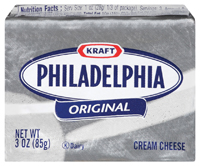Kraft Facility is Built to Last
 To prioritize sustainability activities, Kraft Foods is focusing on six areas where the company can have the greatest impact and that have the greatest impact on its business: agricultural commodities, packaging, energy, water, waste, and transportation and distribution.
To prioritize sustainability activities, Kraft Foods is focusing on six areas where the company can have the greatest impact and that have the greatest impact on its business: agricultural commodities, packaging, energy, water, waste, and transportation and distribution. "From 'big picture' issues like climate change driven by greenhouse gases, to local issues like coffee and cocoa farmers earning a decent wage, Kraft is finding ways to have positive impacts on the world we live in," says Jeff Chahley, senior director, sustainability, Kraft.
Greening Distribution
Most recently, Kraft announced that its new, 800,000-square-foot building located in Morris, Ill. (near Chicago) was recognized for advanced environmental design by the U.S. Green Building Council (USGBC), a building industry nonprofit group that promotes sustainable development.
The distribution center was developed with ProLogis, a manager and developer of distribution facilities, and completed in the first half of 2007. Together, the companies completed building improvements under the USGBC's "Leadership in Energy and Environmental Design" (LEED) for Commercial Interiors (CI) certification program.
LEED is a third-party certification program and the nationally accepted benchmark for the design, construction and operation of high performance green buildings.
The distribution center is Kraft's first to receive LEED certification and the largest facility of its kind in the world to achieve LEED-CI Gold Certification.
"Kraft worked to add a number of design elements that resulted in the facility going beyond regular LEED certification and achieving Gold status," says Chahley. "Though the certification process was lengthy, the end result is well worth the effort."
Total Logistics Control, a third party distribution services provider, operates the facility for Kraft.
Elements of environmental design that are employed in the Kraft building include:
- Energy-efficient fluorescent lighting with multi-level lighting controls installed, resulting in a 60 percent reduction in lighting energy usage;
- HVAC ventilation system that improves air quality and reduces power consumption by 40 percent;
- Extensive use of recycled and locally sourced materials during construction, with nearly 100 percent of construction debris diverted to recycling centers;
- Use of wood-based construction materials from Forest Stewardship Council certified forests totaling nearly 80 percent; and,
- All interior paints, coatings, adhesives and sealants selected for low volatile organic compounds emission levels.
